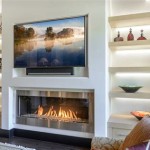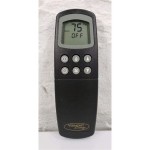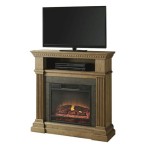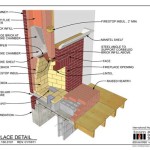Gas Logs for Fireplace Near Me: A Comprehensive Guide
The allure of a fireplace, with its flickering flames and radiant warmth, has captivated humanity for centuries. In modern homes, gas logs provide a convenient and efficient alternative to traditional wood-burning fireplaces. The search for "gas logs for fireplace near me" often signals the beginning of a journey towards enhancing home comfort and aesthetics with a readily available and relatively low-maintenance heating solution. This article provides a detailed overview of gas logs, covering their various types, benefits, selection process, installation considerations, and maintenance requirements, offering valuable insights for prospective buyers.
Understanding Gas Log Systems
Gas logs are ceramic or refractory cement molded and painted to resemble natural wood logs. These manufactured logs are designed to be placed within a fireplace and connected to a gas line, either natural gas or propane. When ignited, the gas fuels flames that dance around and through the logs, creating a realistic imitation of a wood fire. The heat produced radiates into the room, providing supplemental heating. Gas log systems are typically categorized into two main types: vented and vent-free. Understanding the differences between these systems is crucial for making an informed purchasing decision.
Vented gas logs are designed to be used in fireplaces with a fully functional chimney. They produce realistic-looking flames and embers, closely replicating the appearance of a wood-burning fire. However, they require the chimney to be open during operation to vent the combustion byproducts, including carbon monoxide, outside the home. Because of the open chimney, a significant portion of the heat generated by vented gas logs is lost up the flue, making them less efficient for heating purposes. Their primary appeal lies in their aesthetic qualities.
Vent-free gas logs, also known as ventless gas logs, do not require a functioning chimney. They are designed to burn cleanly, producing minimal amounts of carbon monoxide. They are equipped with an Oxygen Depletion Sensor (ODS), which automatically shuts off the gas supply if the oxygen level in the room drops to a dangerous level. Vent-free gas logs are more efficient at heating a room because the heat is not lost up the chimney. However, they produce less realistic-looking flames compared to vented models, and some individuals may experience discomfort due to the slight odor produced during combustion. Building codes in some areas may restrict or prohibit the use of vent-free gas logs, so it is essential to check local regulations before purchasing one.
The choice between vented and vent-free gas logs depends on individual preferences, existing fireplace conditions, and local building codes. Homeowners seeking the most realistic flame appearance and have a functioning chimney may opt for vented logs. Those prioritizing heating efficiency and lacking a chimney may consider vent-free options, provided they comply with local regulations and understand the potential drawbacks.
Key Considerations When Selecting Gas Logs
Finding the right gas logs involves careful consideration of several factors, including size, type of gas, ignition system, material, and aesthetic appearance. Each of these aspects contributes to the overall performance, efficiency, and visual appeal of the gas log system.
The size of the gas logs should be proportionate to the firebox of the fireplace. Overly large logs can obstruct proper airflow and reduce heating efficiency, while logs that are too small will appear insignificant and detract from the visual appeal. Measure the width, depth, and height of the firebox to determine the appropriate log size. Most manufacturers provide guidance on selecting the right size based on firebox dimensions.
Gas logs are designed to operate on either natural gas or propane. It is crucial to select the correct type of gas log to match the existing gas line in the home. Using the wrong type of gas can lead to inefficient combustion, safety hazards, and damage to the appliance. Natural gas and propane logs have different orifice sizes and pressure requirements and are not interchangeable.
Gas logs are available with various ignition systems, including manual, electronic, and remote-controlled options. Manual ignition involves lighting the pilot light with a match or lighter. Electronic ignition systems use a spark igniter to light the pilot light, often activated with a button or switch. Remote-controlled systems offer the convenience of turning the fireplace on and off from a distance, adjusting the flame height, and setting timers. Consider the level of convenience desired and the budget when choosing an ignition system.
Gas logs are typically made from ceramic or refractory cement. Ceramic logs are lighter and more porous, allowing for faster heat-up and distribution. Refractory cement logs are denser and more durable, providing longer-lasting performance. Both materials are designed to withstand high temperatures and resist cracking or warping. The choice between ceramic and refractory cement depends on personal preference and budget.
The aesthetic appearance of gas logs is a significant consideration for many homeowners. Gas logs are available in a variety of styles, including traditional oak, birch, and pine, as well as more contemporary designs. The level of detail and realism varies depending on the manufacturer and model. Consider the overall style of the home and the desired ambiance when selecting gas logs. Look for logs with realistic bark texture, natural color variations, and detailed branch patterns.
Beyond these core considerations, it is advantageous to research reputable brands and read customer reviews. Quality brands often offer better warranties, customer support, and more durable products. Reviews can provide insights into the real-world performance and reliability of different gas log models.
Installing and Maintaining Gas Logs
Proper installation and maintenance are essential for ensuring the safe and efficient operation of gas logs. While some homeowners may be comfortable with DIY installation, it is generally recommended to hire a qualified professional to install gas log systems, especially when dealing with gas lines and connections. Regular maintenance, including cleaning and inspection, can extend the lifespan of the gas logs and prevent potential safety hazards.
Professional installation ensures that the gas logs are properly connected to the gas line, that the gas pressure is correctly adjusted, and that the system is functioning safely and efficiently. A qualified technician will also inspect the fireplace and chimney to ensure that they are in good condition and meet all applicable safety codes. Ignoring professional installation can lead to gas leaks, carbon monoxide poisoning, and fire hazards.
Before installing gas logs, it is crucial to prepare the fireplace. Clean the firebox thoroughly, removing any ash, debris, or creosote buildup. Inspect the chimney for any signs of damage or blockage. If the fireplace has a damper, ensure that it is functioning properly. For vented gas logs, the damper must be fully open during operation. For vent-free gas logs, the damper must be permanently blocked or removed.
Regular cleaning is essential for maintaining the appearance and performance of gas logs. Over time, dust, soot, and other debris can accumulate on the logs, reducing their visual appeal and potentially affecting combustion efficiency. Use a soft brush or vacuum cleaner to gently remove any surface dirt or debris. Avoid using harsh chemicals or abrasive cleaners, as they can damage the logs.
Inspect the gas logs regularly for any signs of damage, such as cracks, chips, or warping. Damaged logs can affect the flame pattern and potentially pose a safety hazard. Replace any damaged logs immediately. Also, inspect the gas line and connections for any signs of leaks. Use a soap and water solution to check for leaks around the fittings. If any leaks are detected, shut off the gas supply immediately and contact a qualified technician to repair the leak.
Schedule an annual inspection and servicing of the gas log system by a qualified technician. The technician will inspect the gas line, connections, burner, ignition system, and oxygen depletion sensor (for vent-free models) to ensure that they are functioning properly. They will also clean the burner and adjust the gas pressure as needed. Regular servicing can help prevent potential problems and ensure the safe and efficient operation of the gas log system.
Finding Local Suppliers and Installers
Finding reputable suppliers and installers of gas logs is crucial for ensuring a successful purchase and installation experience. Begin by searching online for "gas logs for fireplace near me" to identify local retailers and installers. Check their websites for product catalogs, pricing information, and customer reviews.
Visit local fireplace stores or home improvement centers to see gas log displays in person. This allows for a visual assessment of the logs and the opportunity to ask questions of sales staff. Compare prices and product offerings from different retailers to find the best value. Inquire about installation services and warranty information.
Obtain quotes from multiple installers before making a decision. Ask for references and check online reviews to assess their reputation and quality of work. Ensure that the installer is licensed and insured. Discuss the installation process in detail, including the cost of materials, labor, and any necessary permits. A reputable installer will provide a clear and detailed estimate.
Consult with neighbors, friends, or family members who have gas logs for recommendations. Personal referrals can be a valuable source of information and help identify reliable suppliers and installers. Check with local home builders or contractors for their recommendations as well.
Verifying credentials and insurance is paramount when selecting an installer. Confirm that the installer possesses the necessary licenses and permits to perform gas appliance installations in the local area. Request proof of liability insurance to protect against potential damages or injuries during the installation process. Choosing a qualified and insured installer minimizes the risk of safety hazards and ensures that the installation is performed according to industry standards and local regulations.

How To Perfectly Choose Gas Fireplace Logs Expert Tips

American Gas Log Dundee Oak 18 In Vented Propane Fireplace Set With Complete Kit Safety Pilot Lit Do18hdlp The Home Depot

Duluth Forge Split Red Oak 24 In Vent Free Gas Fireplace Logs With Thermostat 210069 The Home Depot

Gas Logs Arlington Tx Black Velvet Chimney

Convenient Gas Fireplace Services In Monterey Santa Cruz

Gas Logs Doors Installation In Ma Ri Anderson Fireplace

Procom Heating 32 000 Btu Gas Log Set With 24 In Dual Fuel Technology 210128 The Home Depot

Ina Bonfire Vented Gas Log Set Casual Furniture World

Majestic Duzy 5 30 8 Piece Fiber Ceramic Vented Gas Log Set Us Fireplace

Napoleon Gl18e Vented Gas Log Set 18 Inch
Related Posts








